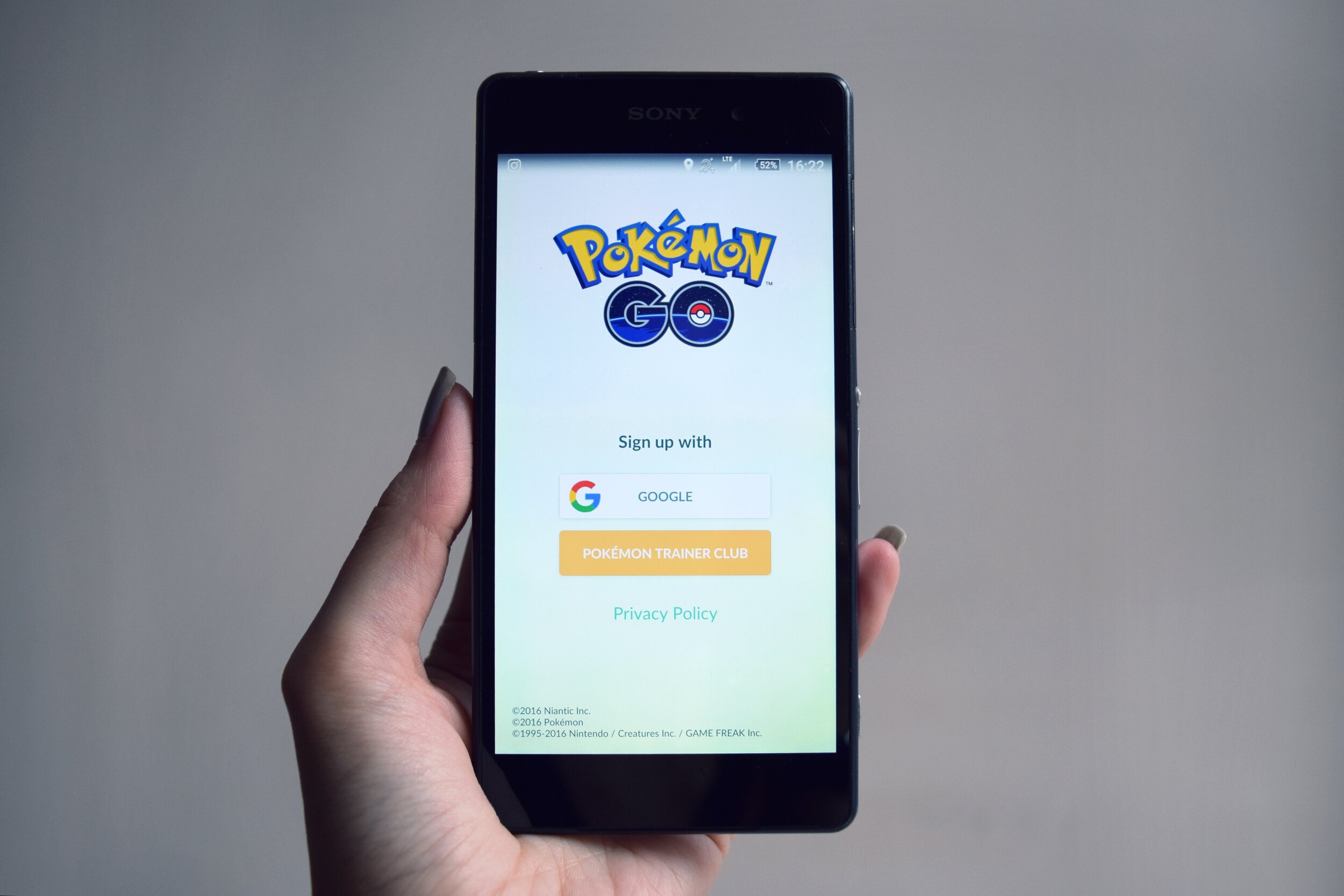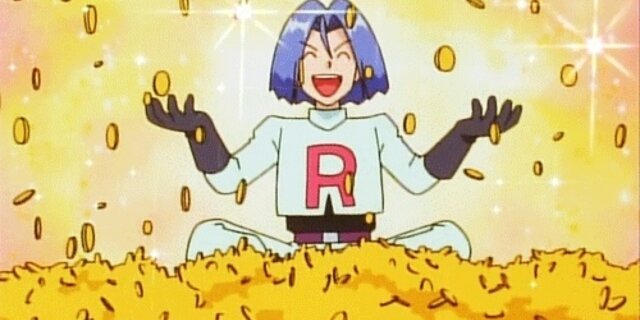Pokémon Go: Where is it Headed?
Pokémon Go has been out for over three months, and in that small window of time, it has gone through a whirlwind of success—jumping to the #1 spot in both the iOS store and the Google Play store respectively, sweeping over the phones and lives of new fans and old nostalgic’s alike—but will it last?
At one point, the fervor seemed to be growing out of control here in the United States. Users were involved in wrecks, they were being robbed, they were falling off cliffs, and even finding dead bodies, on numerous occasions. So many dead bodies in fact, that I decided to just make that last link lead to a Google search, because I’m too lazy to compile any sort of data into a graph.
Give me a few years, I’ll get there. (Credit to Stephen Oliver at Unsplash.com)
Yet somehow, when you fast forward to today, Pokémon Go looks like it’s starting to fade from the limelight. What happened? The answer is actually less intricate than one would think. Pokémon Go is an overly simplified game that was riding a PR generated hype-train.
Ever since the April Fool’s day prank “Pokémon Challenge” was released in 2014 through the collaborative efforts of Nintendo, The Pokémon Company, and Google, fans began begging and hoping for a real time Pokémon game that could deliver a modern twist to a long successful Nintendo franchise.
Come 2016, a company called Niantic gave users what they asked for. Except, it seems that maybe fans didn’t know what they wanted, or maybe Niantic didn’t know how to deliver such a product in the first place.
What???
It’s like this: when Pokémon Co., Nintendo, and Google released the “Pokémon Challenge” the Pokémon fanbase collectively lost their shit. Playing Pokémon in the real world was an actual possibility.
So what did fans do next? They jumped on it.
They told Nintendo and Google everything they wanted: the ability to catch and raise Pokémon while also playing with, around, and against others. Not on an expensive Nintendo handheld either. Users wanted it on something more accessible, something that everyone has, something that isn’t an additional purchase that would burn a hole in their pockets. They wanted it on their smartphones.
“Bugs are tiresome but expected. What really irked a lot of people was the fact that Niantic’s app didn’t even have half of the things that they previewed in their teaser.”
So, Pokémon Co. and Niantic teamed up and did just that, and this is where the oversight came into play. Everyone was so intent on developing the app and getting what they wanted, that both the seller and the consumers completely forgot about what made Pokémon great.
It was the story, the gameplay, the grind of starting out with nothing but a single Pokémon and working up from there. Whether it was the fanbase’s fault, Niantic’s, or a combination of both, is up to debate. Consumers struggled to convey what made them love Pokémon in the first place, and Niantic itself didn’t appear to take the time to learn about the consumer demographic, or what caused Pokémon to be so successful.
Whoops.
There are arguments that Niantic either didn’t care about the user base’s wants, or just didn’t feel like it mattered. This video is a strong example. It’s what Niantic had as their teaser less than a year before release. The teaser had people catching Pokémon, making trades, having battles in public and even large crowds taking on legendary Pokémon in areas such as Times Square.
Sure, Niantic didn’t promise a story line—and no one can expect a giant fight against Mewtwo just yet, considering how recent the release was—but Niantic seemed to have a basic understanding of what made Pokémon succeed and they still didn’t deliver. Bugs are tiresome but expected. What really irked a lot of people was the fact that Niantic’s app didn’t even have half of the things that they previewed in their teaser.
“Niantic is already calling in quality control and trying to deliver new aspects such as the buddy system, Pokémon Plus, trading, and battles. It remains to be seen if it is too little, too late.”
So, come July, Niantic decided to release its half-assed brainchild. Early sales were a huge success, but as time progressed, and users found themselves continuously performing the same actions, they began to realize how monotonous the game was.
Outside of leveling up, there is no excitement, no real reward, no grind.
One could argue that gyms were a welcome distraction, but they weren’t really what a lot of people expected. Instead of having a classical setting, gyms just ended up being checkpoints that teams battle for. There are no rewards, no increasing difficulty, or final challenge. Just a claim to a spot, owned by whatever faction arrived first.
Same.
We are now at the point where critics have started to call out Niantic for this lack of substance. The number of people that are visibly playing the game has dropped drastically. Of course, there are still those die-hard fans that are continuing to give the game a chance, but all in all, it doesn’t seem like the game will have much of a shelf life, unless action is taken. Niantic is already calling in quality control and trying to deliver new aspects such as the buddy system, Pokémon Plus, trading, and battles. It remains to be seen if it is too little, too late.
“If Niantic makes a complete turnaround, due to a release in China, South Korea or otherwise, their earnings might return to the same levels as the initial release; while hopefully continuing to improve and add to the game.”
Luckily, Pokémon Go hasn’t been out as long in other countries, and recent reports show that the app is making $2 million a day. Not something to scoff at. Still, compared to the $16 million a day that it was making at release, you could still argue that Niantic has still taken quite a plunge when it comes to revenue.
So where does that leave Pokémon Go?
At this point it’s up in the air. Niantic is rumored to be working on an update that allows trading, and hopefully, they will follow up with battles outside of gyms.
From there, who knows?
Depending on reception, Pokémon Go could continue to sink in popularity or stay afloat. If Niantic makes a complete turnaround, due to a release in China, South Korea or otherwise, their earnings might return to the same levels as the initial release; while hopefully continuing to improve and add to the game.
Don’t get me wrong, I sincerely hope that everything works out for the best, and that Pokémon Go continues being a reality. I’m just unsure if a company like Niantic really cares at this point, now that they’ve made so much money.
If this venture ends in failure, I don’t see any other corporation taking a chance with the medium for a good while. Either due to fans being reluctant or investors being unsure about turnaround with an idea that already faltered. So here’s hoping to the continued success and improvement of Pokémon Go, whether it’s for us, or the dough.
C’mon, let’s be honest with ourselves.
Feature Photo: Credit to @Mimzy at Pixabay.com







